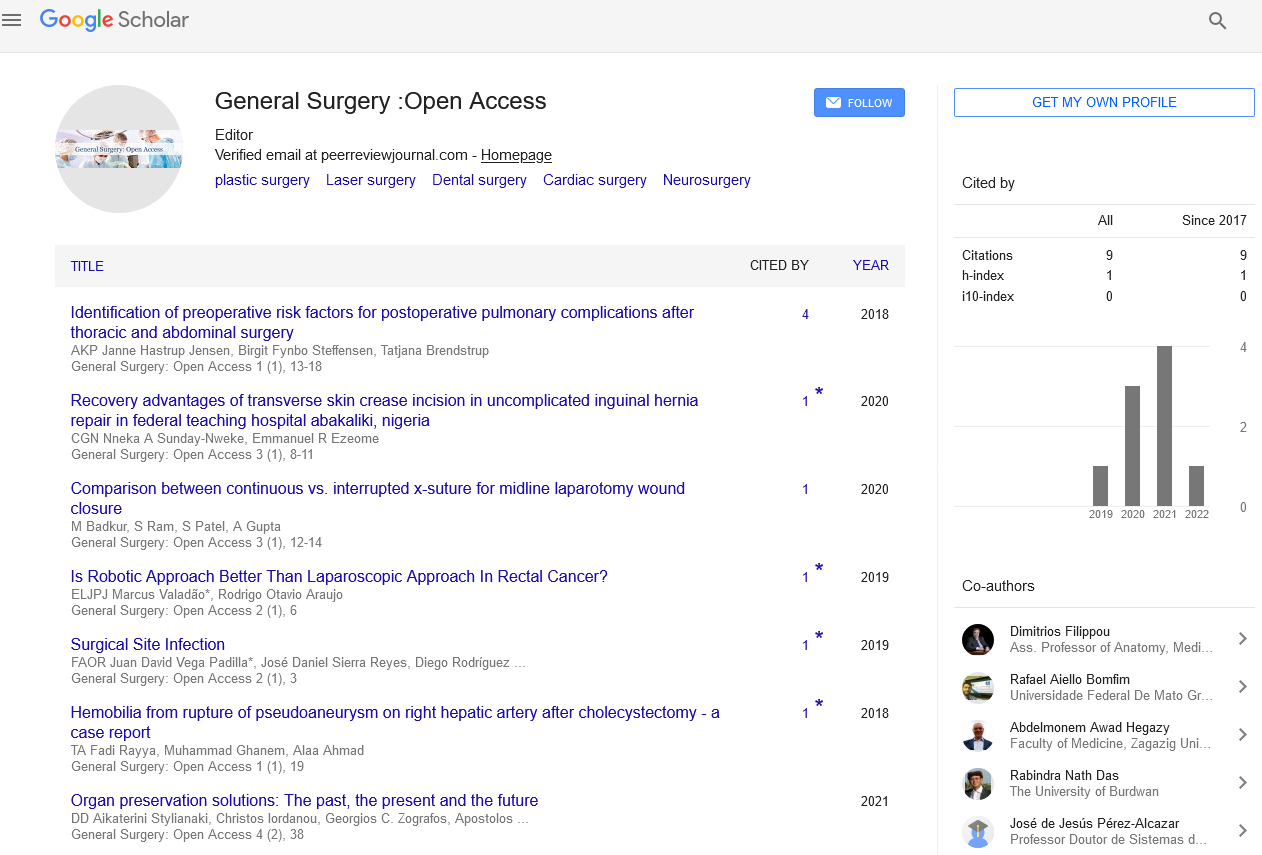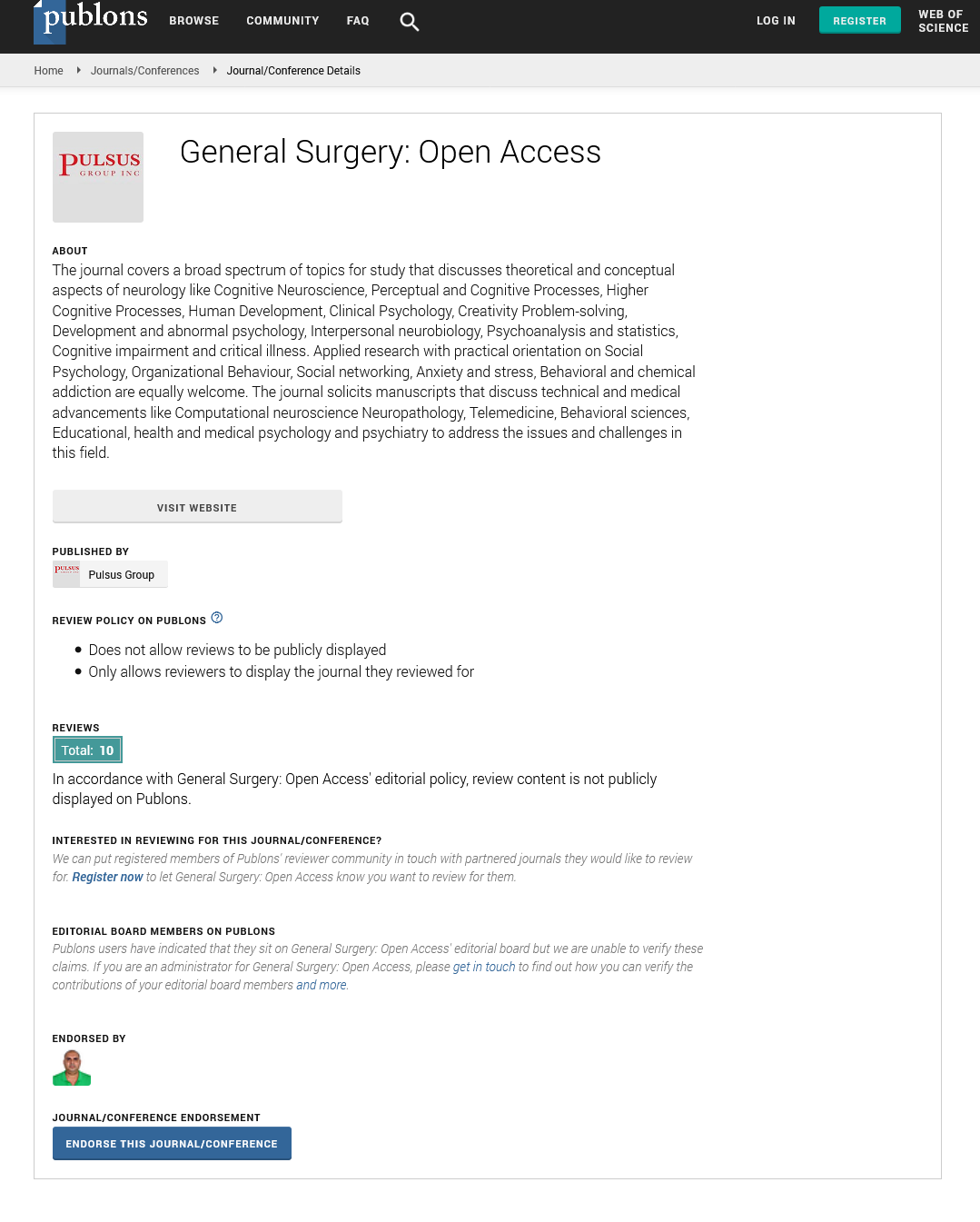Bull Horn and Bull Fighting Injuries
Received: 03-Dec-2021, Manuscript No. PULGSOA-22; Editor assigned: 08-Jan-2022, Pre QC No. PULGSOA-22(PQ); Accepted Date: Jan 05, 2022; Reviewed: 18-Dec-2021 QC No. PULGSOA-22(QC); Revised: 04-Jan-2022, Manuscript No. PULGSOA-22(R); Published: 14-Jan-2022, DOI: 10.37532/pulgsoa.2022.5(1)-01
This open-access article is distributed under the terms of the Creative Commons Attribution Non-Commercial License (CC BY-NC) (http://creativecommons.org/licenses/by-nc/4.0/), which permits reuse, distribution and reproduction of the article, provided that the original work is properly cited and the reuse is restricted to noncommercial purposes. For commercial reuse, contact reprints@pulsus.com
Abstract
Objectives: Improving knowledge on the epidemiology and analysing the prognostic factors of severity for injuries caused by fighting bulls in Spain, Portugal and southern France.
Methods: Observational retrospective study including 1239 patients with a reported history of bull horn injuries between January 2012 and November 2019 in Spain, Portugal or southern France.
Results: The mean accident rate was 9.13% and the mortality rate was 0.48%. The most frequent mechanism of trauma was goring, and the commonest locations of the lesions were thigh and groin. Vascular lesion was found in 20% of thigh/groin gorings. Prognostic factors of severity were vascular lesion, head trauma, fracture, goring injuries and age of the animal. The most reliable prognostic factors of mortality were vascular lesion and goring in the back.
Conclusion: Lesions caused by fighting bulls are common in the bullfighting events held in Spain, Portugal and southern France. Although the mortality rate is low, there is a higher morbidity rate, which is conditioned by vascular lesion. All medical teams should include a surgeon experienced in vascular surgery and an anaesthesiologist.
Introduction
Bullfighting celebrations are common in both Ibero-American nations and Spain. The Valencian Community, Castilla-Leon, and Navarra, in that order, are the Spanish communities with the most bullfighting festivals each year. In Navarra, these celebrations are well known for the release of Spanish fighting bulls in the streets (known as 'running with the bulls' in the English-speaking world), and every summer there are approximately 1500 popular celebrations (including young bull calves, bull-trimmer contests, running, and so on). Accidents occur despite the precautions taken (civil liability insurance, the presence of medical staff, the ban of involvement of minors under the age of 16, safety fences, and so on).
Individuals injured in these amateur bullfighting events should be considered polytrauma patients, and their treatment should be tailored to their specific injuries. Furthermore, the special features of the injuries caused by the bull's or bull calf's horn must be examined. Despite the fact that they are common, there have been few scientific papers describing injuries sustained while participating in amateur bull-related activities. What makes this study unique is that it only covers individuals who were admitted to the hospital due to injuries sustained during public bullfighting events. Professional bullfighters and patients with minor injuries treated by the medical staff on-site were not permitted.
Open bull-horn wounds exhibit consistent and distinct features that set them apart from other types of trauma. They are bruised wounds with uneven and anfractuous edges, with a tiny surface diameter. Because they frequently occur with various trajectories producing significant tissue injury as well as the entrance of foreign substances, these wounds are thought to be directly contaminated by the vast admission of aerobic and anaerobic microorganisms. The amount of damage generated will be determined by the afflicted tissue's resistance to harm. Skin is a tough tissue made up mostly of collagen and elastic fibres. Subcutaneous cellular tissue is weaker and less vascularized.
Muscle has little mechanical resistance and its fibres are readily broken, but tendons have high mechanical strength. The arteriovenous and peripheral nerve systems are extremely flexible. Because bone is not highly elastic, it absorbs kinetic energy and fractures.
The site of injuries among amateur bullfighters who 'fight' in the streets differs from that of professional bullfighters. Professional bullfighters face the bulls head-on, and their injuries tend to be on the front of the body. Bullfighting in the street, on the other hand, has been linked to injuries to both the front (when the amateur 'trims the bull') and the rear (buttocks, perineum, thigh) if the damage happens while escaping.
When the entire number of injuries (both open and closed trauma) in this study were included, 61.65 percent were situated in the lower extremities and perineum. If only open injuries are included, 81.23 percent are situated in the perineum and lower extremities, which is consistent with previous research. These patients are managed in the same way as polytrauma patients, with the goal of maintaining airway patency, ventilatory control, and hemodynamic control. Contusions necessitate immobilisation, compression bandaging, ice treatment, evacuation, and, in severe cases, surgery. Wounds must be considered polluted by microorganisms on the horn and in the environment, thus they must be extensively investigated, with all trajectories and accompanying injuries examined. To achieve hemostasis, avoid shock, remove foreign substances from the wound, wash and debride the devitalized tissue, conduct a Friedreich, renew the margins, and reconstruct the region in the most anatomical and functional way feasible, steps should be followed.






